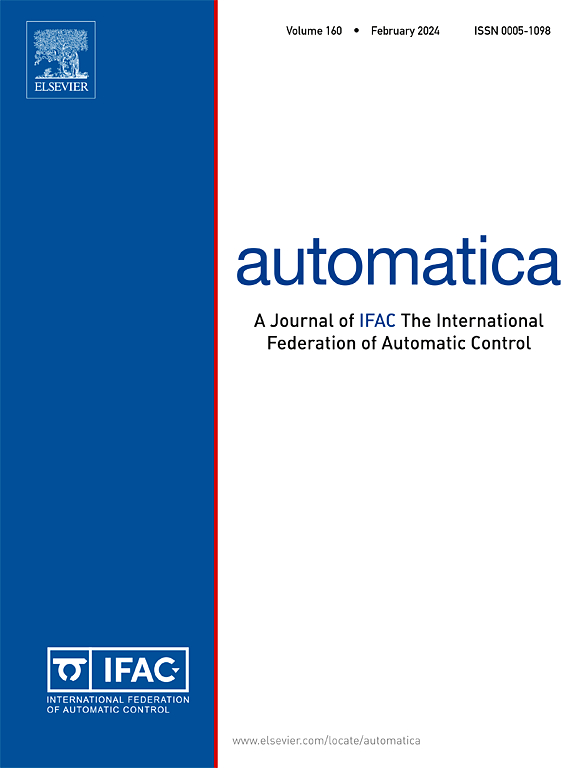Robustness of supervisory controllers subject to measurement disturbances
IF 5.9
2区 计算机科学
Q1 AUTOMATION & CONTROL SYSTEMS
引用次数: 0
Abstract
This paper studies the supervisory control problem for a class of uncertain nonlinearly parameterized systems in the presence of measurement disturbance. Based on the well-established estimator-based supervisory control structure, a robustification of supervisory controller dealing with measurement disturbance is developed taking advantage of the monitoring signals redesign, such that the plant state asymptotically converges to a given set-point or its neighborhood, subject to the vanishing or the persistent measurement disturbance, respectively. Moreover, a constructive design of the multi-estimator using measurement feedback is proposed for the supervisory control of a class of uncertain nonlinearly parameterized systems in the strict-feedback form. A numerical simulation based on an uncertain mass–spring system is given to show the efficacy of our proposed algorithm, in which we use an event-trigger to be a measurement disturbance generator.
测量扰动下监控控制器的鲁棒性
研究了一类存在测量扰动的不确定非线性参数化系统的监督控制问题。基于已建立的基于估计量的监控结构,利用监测信号的再设计,提出了一种处理测量扰动的监控控制器的鲁棒性,使得在测量扰动消失或持续的情况下,系统状态分别渐近收敛于给定的设定点或邻域。此外,针对一类不确定非线性参数化系统在严格反馈形式下的监督控制,提出了一种基于测量反馈的多估计器构造设计。通过一个不确定质量弹簧系统的数值仿真,验证了该算法的有效性,该算法采用事件触发器作为测量扰动发生器。
本文章由计算机程序翻译,如有差异,请以英文原文为准。
求助全文
约1分钟内获得全文
求助全文
来源期刊

Automatica
工程技术-工程:电子与电气
CiteScore
10.70
自引率
7.80%
发文量
617
审稿时长
5 months
期刊介绍:
Automatica is a leading archival publication in the field of systems and control. The field encompasses today a broad set of areas and topics, and is thriving not only within itself but also in terms of its impact on other fields, such as communications, computers, biology, energy and economics. Since its inception in 1963, Automatica has kept abreast with the evolution of the field over the years, and has emerged as a leading publication driving the trends in the field.
After being founded in 1963, Automatica became a journal of the International Federation of Automatic Control (IFAC) in 1969. It features a characteristic blend of theoretical and applied papers of archival, lasting value, reporting cutting edge research results by authors across the globe. It features articles in distinct categories, including regular, brief and survey papers, technical communiqués, correspondence items, as well as reviews on published books of interest to the readership. It occasionally publishes special issues on emerging new topics or established mature topics of interest to a broad audience.
Automatica solicits original high-quality contributions in all the categories listed above, and in all areas of systems and control interpreted in a broad sense and evolving constantly. They may be submitted directly to a subject editor or to the Editor-in-Chief if not sure about the subject area. Editorial procedures in place assure careful, fair, and prompt handling of all submitted articles. Accepted papers appear in the journal in the shortest time feasible given production time constraints.
 求助内容:
求助内容: 应助结果提醒方式:
应助结果提醒方式:


